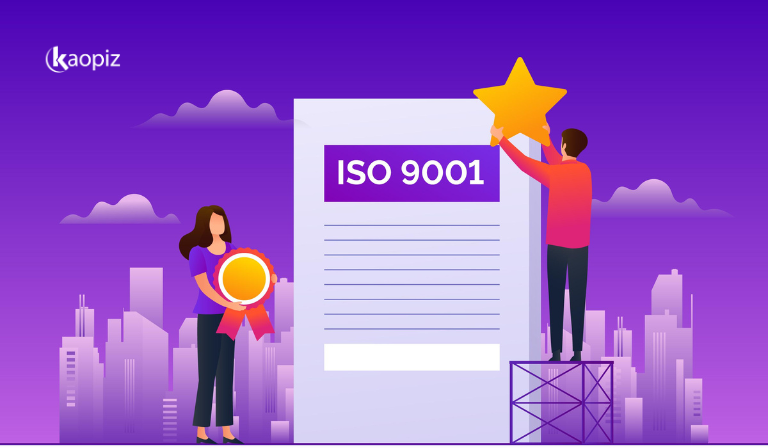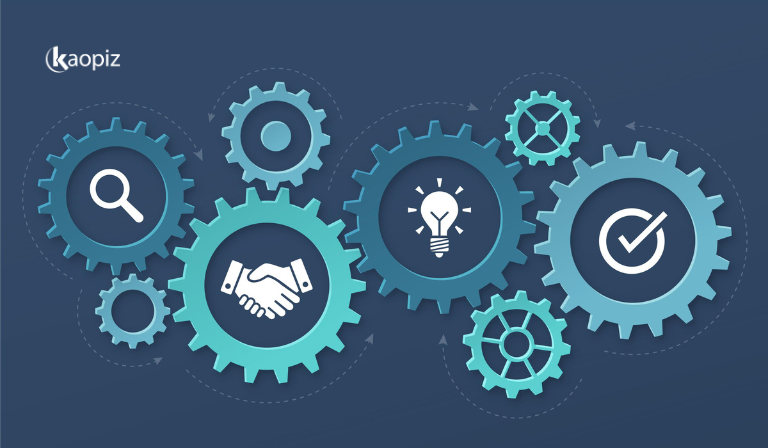Quality Control vs Quality Assurance: What’s the Difference and Why It Matters in Singapore [2025 Guide]
In Singapore’s competitive, innovation-driven market, delivering high-quality products and services isn’t just a value-add—it’s a necessity. Whether you’re building enterprise software, managing a logistics network, or running an e-commerce platform, ensuring quality at every stage is key to maintaining customer trust and meeting regulatory expectations. Yet, many businesses still struggle with one common question: What is the difference between Quality Control vs Quality Assurance? And more importantly: Do I need both?
In this guide, we provide Quality Assurance vs Quality Control examples in Singapore, explain the difference between them, and show how to apply both effectively—whether in-house or through a trusted IT outsourcing partner.
Table of Contents
- What Is Quality Assurance (QA)?
- What Is Quality Control (QC)?
- What Is the Difference Between Quality Control vs Quality Assurance?
- Why Both QA and QC Are Essential in Singapore
- Common Misconceptions: QC vs QA or QC and QA?
- How to Apply QA and QC in Your Business
- Why Kaopiz is a Trusted Software QA/QC Partner for Singapore Businesses?
- Conclusion
- FAQs
What Is Quality Assurance (QA)?
Quality Assurance is a proactive, process-oriented approach that ensures products and services are developed in the right way to prevent defects before they occur. Instead of inspecting finished products, QA focuses on improving and standardizing the processes involved in development, manufacturing, or service delivery.

Key characteristics of QA include:
- Preventive in nature: QA aims to eliminate problems before they happen.
- Process-focused: It emphasizes workflows, documentation, and compliance.
- Continuous improvement: QA supports iterative enhancements through audits, feedback, and process optimization.
- Applicable across industries: From software to manufacturing, QA ensures standards are upheld at every step.
In Singapore, where industries face stringent regulatory and customer expectations, QA plays a crucial role in maintaining trust and competitiveness. Here are some examples:
- Software companies often integrate QA into Agile development cycles through code reviews, process audits, and standardized testing protocols.
- Fintech firms implement QA systems to comply with MAS Technology Risk Management Guidelines, ensuring security and performance from the ground up.
- Manufacturers and Medtech companies use QA frameworks such as ISO 9001 or ISO 13485 to maintain compliance with EnterpriseSG, HSA, or global quality standards.
What Is Quality Control (QC)?
Quality Control is a reactive, product-oriented approach that focuses on detecting and correcting defects in the final output. While QA ensures the process is followed correctly, QC ensures that the product meets the required quality standards before it reaches the customer.

Key characteristics of QC include:
- Detection-focused: QC identifies issues after a product or service is developed.
- Product-based: It inspects, tests, and validates final outcomes.
- Driven by standards: QC checks that deliverables meet internal or regulatory requirements.
- Often manual or tool-assisted: QC involves activities like testing, inspections, or validation.
In Singapore’s high-quality, standards-driven business landscape, QC is crucial across sectors:
- Tech companies partner with a software testing company in Singapore to ensure applications are bug-free before launch.
- eCommerce businesses conduct product inspections and packaging checks before shipping, minimizing returns and customer dissatisfaction.
- Healthcare and pharmaceutical firms rely on QC to verify drug consistency, safety, and packaging according to HSA guidelines.
What Is the Difference Between Quality Control vs Quality Assurance?
While QA and QC are closely related, they serve distinct roles in ensuring overall product and service quality. In this section, we explain the differences between quality assurance and quality control, based on several key criteria.
- QA is proactive, focusing on improving the processes that create products.
- QC is reactive, concentrating on identifying and fixing defects in the final output.
Both are essential for building high-performing, error-free systems—especially in regulated, competitive markets like Singapore. Here is the summarized table to compare Quality Control vs Quality Assurance.
| Aspect | Quality Assurance (QA) | Quality Control (QC) |
|---|---|---|
| Focus Area | Processes and systems | Final product or output |
| Goal | Prevent defects by improving processes | Detect and fix defects in finished products |
| Approach | Proactive (prevention-focused) | Reactive (correction-focused) |
| Tools | Checklists, documentation tools, audit software | Testing tools, inspection kits, bug tracking systems |
| Techniques | Process audits, training, standards implementation | Manual/automated testing, inspections, validation checks |
| Timing | During development or production | After development, before product release |
| Responsibility | All team members involved in the process | Dedicated testers, QA engineers, or quality inspectors |
| Outcome | Consistent process quality, fewer production issues | Verified product quality, reduced customer complaints |
Focus Area
The focus area is the fundamental distinction between Quality Control vs Quality Assurance.
- QA focuses on the processes involved in creating a product or delivering a service. It aims to establish best practices, procedures, and standards that guide teams toward consistent quality throughout the development or production lifecycle.
- QC focuses on the final product or outcome. It involves inspecting and testing the deliverables to ensure they meet the specified requirements and are free from defects before reaching the customer.
Goal
The primary goal of each practice reflects its role in the quality management process.
- QA aims to prevent defects by establishing strong processes and standards. Its goal is to ensure that quality is built into every stage of development or production, reducing the likelihood of errors before they occur.
- QC aims to detect and correct defects in the final product or service. Its goal is to verify that the output meets the defined quality standards before it is delivered to the customer.
Approach
Approaches to achieving quality are the difference between Quality Control and Assurance—one is preventive, the other is corrective.
- QA follows a proactive approach. It focuses on designing and implementing processes that minimize the chances of defects occurring in the first place. QA teams work to improve workflows, enforce best practices, and ensure all steps align with quality standards from the outset.
- QC adopts a reactive approach. It comes into play after the product or service has been developed, aiming to identify and fix defects through inspections, testing, and validation before release.
Tools
The tools used in QA and QC reflect their distinct objectives—QA tools help manage and improve processes, while QC tools are designed to evaluate the final output.
Quality Assurance Tools:
- Process documentation systems (e.g., Confluence, Notion)
- Audit and compliance tools
- Workflow automation platforms
- Project management tools (e.g., Jira, Trello for process tracking)
- Static code analysis tools (e.g., SonarQube) for early error detection
Quality Control Tools:
- Manual and automated testing frameworks (e.g., Selenium, Appium, TestNG)
- Bug tracking systems (e.g., Jira, Bugzilla)
- Inspection checklists and quality control forms
- Performance testing tools (e.g., JMeter, LoadRunner)
- Visual inspection tools (for hardware or manufacturing QC)
Techniques
The Quality Control and Quality Assurance difference lies in their techniques, with QA techniques focusing on prevention and process optimization, while QC techniques concentrate on defect detection and correction.

Quality Assurance Techniques:
- Process audits to ensure teams follow defined procedures
- Root cause analysis (RCA) to identify underlying process failures
- Standard Operating Procedures (SOPs) to maintain consistency
- Training and certification programs for teams
- Documentation reviews to validate process compliance
Quality Control Techniques:
- Functional testing (unit, integration, system, and UAT)
- Regression testing to verify that new changes don’t break existing features
- Visual inspection (in manufacturing or hardware QC)
- Statistical sampling to evaluate batch quality
- Defect tracking and reporting for continuous improvement
Timing
The timing of Quality Control vs Assurance activities is another key distinction that affects how and when each practice is implemented during the product development or production cycle.
- QA is implemented early in the process, focusing on improving processes and preventing defects from the start. It’s typically applied during planning, design, and development phases.
- QC is done later, often at the end of the production or development cycle. QC identifies and fixes defects in the final product through testing, inspections, and validation before release.
Responsibility
The responsibility for Quality Control vs Quality Assurance differs based on their roles in the quality management process.
- QA is typically a shared responsibility across the entire team. Everyone, from developers and designers to project managers and leadership, plays a part in ensuring processes are followed correctly. QA aims to establish standards, refine workflows, and implement continuous improvements.
- QC is generally the responsibility of dedicated quality professionals or testing teams. QC specialists, such as software testers or product inspectors, are primarily accountable for identifying defects in the final product. They ensure that the product meets predefined standards before it is released to customers.
Why Both QA and QC Are Essential in Singapore
In Singapore’s highly competitive business environment, quality is non-negotiable. Whether you’re operating in software development, manufacturing, healthcare, or fintech, ensuring the highest quality in both your processes and products is crucial for success.
Both Quality Assurance and Quality Control play distinct but complementary roles in achieving this goal:
- QA ensures that the right processes are in place from the beginning—minimizing the risk of defects and enhancing overall efficiency. This proactive approach helps companies in Singapore stay compliant with regulatory standards (e.g., MAS for fintech, ISO standards for manufacturing).
- QC verifies that the final product meets customer expectations, ensuring that only defect-free products are delivered to the market. QC is critical in ensuring customer satisfaction and brand reputation—especially in a market like Singapore, where consumers demand high-quality goods and services.
Common Misconceptions: QC vs QA or QC and QA?
A common misconception in many industries—especially in Singapore’s competitive sectors like tech and manufacturing—is the belief that QA and QC are the same thing, or that one can replace the other. However, this confusion can undermine the quality management process.
Misconception 1: QA and QC Are the Same
While both QA and QC aim to ensure quality, their approaches and timing are completely different:
- QA focuses on preventing defects by improving processes early in the development cycle.
- QC focuses on detecting defects in the final product.
Misconception 2: QA Is More Important Than QC, or Vice Versa
Both QA and QC are essential for high-quality products:
- QA prevents issues from arising in the first place, creating an efficient and compliant development environment.
- QC ensures the final product meets customer expectations and regulatory standards.
Misconception 3: QA Can Be Done without QC, or Vice Versa
QA and QC should never be seen as alternatives—they complement each other. QA improves processes, and QC ensures those processes result in a quality product. Without either, companies risk both inefficiency in development and defects in the final product.
How to Apply QA and QC in Your Business
Implementing QA and QC in your business is crucial for maintaining high standards and ensuring consistent quality. The right approach can enhance productivity, reduce costs, and improve customer satisfaction.

Here’s how businesses in Singapore can effectively apply both practices.
When Should You Outsource QA/QC?
Consider outsourcing when:
- You need specialized expertise: If your company lacks the in-house skills required for thorough testing, compliance checks, or process audits, outsourcing provides access to experienced professionals.
- You want to save time and costs: Outsourcing QA and QC helps reduce the overhead of training employees and maintaining testing infrastructure.
- You’re scaling or entering new markets: As your business grows or you expand into new regions, outsourcing to a reliable partner allows you to maintain quality control without overburdening internal resources.
- You need to meet specific industry standards: For industries like fintech, healthcare, or manufacturing, outsourcing ensures your QA/QC processes align with Singaporean regulations (e.g., MAS guidelines, HSA compliance).
For example, a software company looking to quickly release new products can benefit from outsource QA testing in Singapore to ensure timely delivery without compromising quality.
What to Look for in a QA/QC Vendor in Singapore?
When selecting a software quality assurance company in Singapore, it’s important to choose a partner that understands your specific industry requirements and business needs. Here’s what to look for:
- Industry experience: Ensure the vendor has experience in your specific sector. For instance, if you’re in software development, choose a vendor skilled in automated testing tools and Agile QA.
- Comprehensive services: Look for a vendor that offers both QA and QC services. A vendor who can handle everything from process audits and documentation to bug tracking and performance testing will provide the most value.
- Compliance with local regulations: In Singapore, industries like healthcare and fintech have strict standards. Ensure the vendor follows relevant regulations, such as ISO 9001, MAS compliance, or HSA standards.
- Proven track record: Request case studies or client testimonials to assess the vendor’s success in delivering high-quality results. A reliable vendor will have a history of reducing defects, improving customer satisfaction, and meeting project deadlines.
- Communication and collaboration: A good QA/QC vendor should work as an extension of your team, providing clear communication, transparent reporting, and quick feedback loops.
Why Kaopiz is a Trusted Software QA/QC Partner for Singapore Businesses?
Kaopiz has built a solid reputation as a trusted partner for Quality Control and Quality Assurance services in Singapore. With over a decade of experience in providing high-quality web/mobile app development and testing services, we understand the unique needs of Singaporean businesses and industries.

Here’s why Kaopiz stands out as the go-to QC/QA vendor for software development:
- Expertise in Agile and Automated QA Testing: We specialize in Agile QA and automated testing, ensuring fast, error-free software delivery while maintaining high-quality standards.
- Comprehensive QA and QC Services: From process optimization (QA) to bug tracking and validation (QC), we provide end-to-end quality management for your projects.
- Industry-Specific Expertise: With experience in fintech, healthcare, and more, we ensure compliance with Singapore’s strict regulatory standards, like MAS and HSA.
- Commitment to Continuous Improvement: We offer feedback loops and root cause analysis, ensuring your QA/QC processes evolve and improve over time.
- Scalability and Flexibility: Kaopiz adapts to businesses of all sizes, providing scalable QA/QC solutions whether you’re a startup or an enterprise.
- Local Presence with Global Expertise: With a strong presence in Vietnam and a deep understanding of Singapore’s market, we offer seamless communication and local insight.
- Proven Track Record: With 500+ projects and a 98% satisfaction rate, Kaopiz is trusted to deliver reliable QA/QC services that help businesses stay competitive.
Kaopiz ensures your business achieves quality at every stage of development. Contact Kaopiz today to learn how we can support your QA/QC needs.
Conclusion
Quality Control vs Quality Assurance are critical for businesses in Singapore striving for excellence. While QA focuses on preventing defects through optimized processes, QC ensures that the final product meets customer expectations and regulatory standards.
By integrating both QA and QC, companies can minimize risks, enhance efficiency, and improve overall customer satisfaction. Whether you’re in software development, manufacturing, or fintech, applying both practices ensures that your business delivers high-quality results at every stage.
FAQs
- Are There Standards for QA/QC in Singapore?
- Yes, Singapore follows several standards and guidelines for Quality Control or Quality Assurance, such as ISO 9001 for quality management, ISO 13485 for medical devices, and MAS guidelines for the fintech industry. These standards ensure products and services meet regulatory and customer expectations.
- What Industries in Singapore Use QA and QC?
- QA and QC are essential across multiple industries in Singapore, including software development, healthcare, manufacturing, fintech, and e-commerce. Each industry applies these practices to ensure compliance, efficiency, and customer satisfaction.
- Is Quality Assurance vs. Control just a Terminology Issue?
- No, QA and QC are distinct practices. Let’s define Quality Control vs Quality Assurance. QA focuses on preventing defects through process improvements, while QC detects defects in the final product. Both are necessary for ensuring product and service quality.
- Can I Outsource QA and QC Together to One Vendor?
- Yes, many businesses in Singapore choose to outsource both QA and QC to a single vendor for consistency and streamlined management. A trusted vendor can provide comprehensive quality management services from process optimization to final product validation.
- What Are the Benefits of Outsourcing QA to Vietnam from Singapore?
- Outsourcing QA to Vietnam offers cost-effective solutions, access to skilled QA professionals, and the ability to scale your testing efforts without compromising quality. Vietnam’s growing tech industry and favorable business environment make it an ideal location for outsourcing QA services.




















